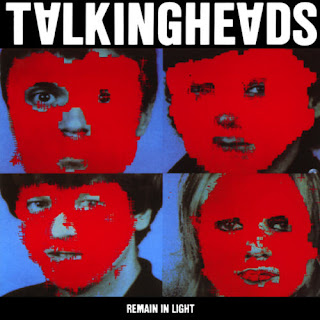A legion of eccentrics with four-track tape-recorders in their bedsits sent off singles, and if the track caught BBC Radio 1 DJ John Peel's ear they'd enjoy a brief taste of glory on the national airwaves.
Taken from one of two sessions this Birmingham band did for Peel, "Going Through the Motions" takes the piss out of of professionalized-to-living-death rock bands by fully enacting the title: the beat limps like it's sprained in both ankles, the guitars dirge gruesomely, Robert Lloyd's voice is a listless, tuneless wail.
Prefects - Going Through the Motions 1980
Just vocals and percussion, Furious Pig's yowling zoo-music resembles a pygmy barbershop quartet. "I Don't Like Your Face", their sole single for Rough Trade, was based on the sort of mean thing children say in the playground, they told the NME: 'Kids are really nasty'.
Furious Pig - I Don't Like Your Face 1980
From its fluster-flurry of buzzsaw guitar chords to the gormless jabbered harmonies and lines like 'Margaret Thatcher is so sexy/She's the girl for you and me/I go red when she's on the telly/'Cos I think she fancies me', the Notsensibles' most famous ditty, "(I'm In Love with) Margaret Thatcher", taps into the side of punk all about not taking anything seriously.
Notsensibles - (I'm in Love with) Margaret Thatcher 1979
Leaning more towards the New Wave/early evening Radio One end of things, but a definite Peel fave, "Where's Captain Kirk?" is an hectic, panic-stricken hurtle which enjoyed seven weeks at number 1 in the independent chart.
Spizzenergi - Where's Captain Kirk? 1979
Sung by mainman Alig Fodder from the point of view of a man who's in a state of arrested putrefaction ('There's times I feel fungus growing on me') and wishes he could get it over with and be dead, "Playing Gold (with My Flesh Crawling)" is a macabre yet chirpy ditty which features a phantasmagoria of wobbly processed vocals, jaunty organ and No Wave-like screech-guitar.
Family Fodder - Playing Golf (with My Flesh Crawling) 1979
Ammoniacaustic guitar, jabs of atonal synth, and singer Jaz Coleman growling about sinister 'controllers' and nuns getting fucked - Killing Joke's "Pssyche" is simultaneously silly and scary.
Killing Joke - Pssyche 1980
Buzzcock Pete Shelley explores his Krautrock/Fripp & Eno avant-rocky side in tandem with a Manchester teenager called Eric Random to produce a blitzkrieg of pounding drums and Neu!-like guitar clangour in "Big Noise from the Jungle".
The Tiller Boys - Big Noise from the Jungle 1979
In "Violence Grows" the baleful pop tones of fifteen-year old punk starlet Honey Bane survey London's frayed social fabric in a banner year for street violence. Gloatingly noting how bus conductors have learned to keep their traps shut when thugs refuse to pay, Bane then taunts the listener: 'While you're getting kicked to death in a London pedestrian subway/Don't think passers-by will help/They'll just look the other way'. Slow-drone psychedelia midway between The Doors' "The End" and the Velvets' "Venus in Furs" swirls behind her. An astonishing one-off.
Fatal Microbes - Violence Grows 1979
The Doors - The End 1967
Velvet Underground - Venus in Furs 1967
Cloying whimsy collides with genuine psychedelic strangeness on "There Goes Concorde Again", the brainchild of two Wimbledon School of Art graduates, William Wilding and Nanette Greenblatt. Buoyed by moonwalking bass and keyboard that caper like tipsy aliens, Greenblatt plays the batty housewife peering through net curtains and cooing, 'Oooooooh, look - there goes Concorde again!'
(And The) Native Hipsters - There Goes Concorde Again 1980


































